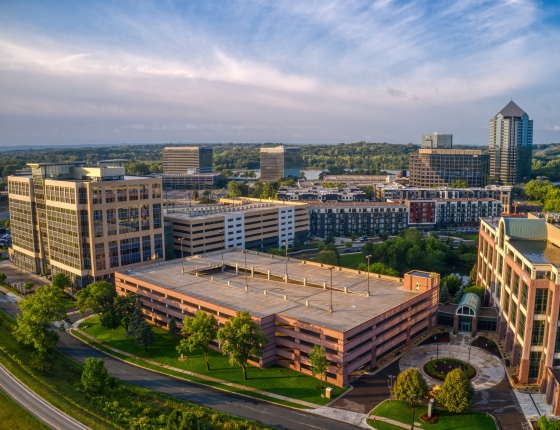With big sustainability goals, the cities of Edina and Northfield are taking action to ensure City-supported new developments are green.
Grace Hancock, Edina sustainability manager, said, “City council has goals for Edina to be a place where all can thrive including people, plants, and animals. To make that reality, we’re asking: how can we build better from the beginning?” New construction presents a blank slate, an opportunity for better resource use, increased energy and water efficiency, and better design for the health of humans and nature in our built environment. The Minnesota construction code provides minimum standards for new building health, safety, and efficiency. “However, the building and energy codes at the State level are not sufficient for Edina to meet climate goals,” Hancock said. In Northfield, Beth Kallestad, the City’s sustainability coordinator, said, “As electricity and natural gas are primary sources of greenhouse gas emissions in the city of Northfield, we felt it is important to start working on items that can address buildings and their energy use.” Without authority to change the building code, they are doing the next best thing.
Edina and Northfield recently joined more than a half dozen other Minnesota cities by adopting sustainable building policies. Over the past year, CEE worked with the two cities to plan and develop their policies following the Minnesota Municipal Sustainable Building Policies Guide. These policies establish minimum sustainability criteria that go beyond existing state code for new construction or significantly renovated developments. Included criteria target areas to reduce pollution and conserve resources. Developers trigger the policy when submitting requests to the City, in Northfield’s case for public funding and in Edina for either public funding or a planned unit development (PUD).
In both cities only a handful of developers seek public funding such as grants, loans, and tax increment financing each year. In Edina, even fewer seek PUDs. As Kallestad said, “We’re not going to build that many buildings that this will apply to. But what we can do with this policy is help show the builders and development community that we are trying to move the market and shift all buildings eventually to this type of design approach. The more experience the developers get, the easier it is to build, and the costs come down.” In Northfield's stakeholder engagement process, an architect shared how a client requiring the Passive House standard helped him understand what's necessary to meet the standard and the benefits of doing so. He's now an advocate for the standard.
Both policies follow the two-part MN Municipal Sustainable Building Policies Guide model. First developed more than 10 years ago by the City of Saint Paul with the help of the Center for Sustainable Building Research, the model’s foundation presents comprehensive sustainability rating systems for developer teams to choose from. These options often include common rating systems such as LEED and B3. The model’s second part is a short list of criteria specific to an individual city. These are mandatory regardless of the rating system selected. Examples from Edina and Northfield include requiring greenhouse gas emission modeling, bird-safe glazing, and minimum number of EV chargers in new development. This mix of flexibility and requirements helps keep costs down while securing the City’s highest priorities.
Developing the policy framework is the beginning; implementation is where the rubber really meets the road. Given the two Cities’ limited operational capacity, there was concern about putting the policy into practice. Thankfully, Hennepin County has become a partner in developing resources for sustainability-focused policies and supports City benchmarking policies. CEE helped triangulate the Cities’ needs with the County and as a result, the County is conducting an RFP process to select a vendor to support the sustainable building policies. Cities can use a joint powers agreement to more easily contract with a vendor that has been chosen through a competitive process. This vendor will be the technical expert to educate the development community on the policies, help Cities verify whether policy criteria are being met, and summarize the energy, water, greenhouse gas, and other savings as well as other results from the policy.
With all the pieces coming into place, Hancock said, “Our policy is designed to maximize effectiveness and minimize additional workloads. We could not have come out of this with such a crisp and compelling policy without CEE’s facilitation and research. Thanks [also] to a partnership with the County, staff and developments will benefit from the outside support and technical expertise.” Edina’s policy comes into effect April 1, 2022, while Northfield’s policy came into effect upon policy adoption on January 4, 2022.
CEE works with communities to advance their clean energy and sustainability initiatives. Check out our Communities pages to learn more about how we can support your community with energy consulting, planning and engagement, and policy development.
